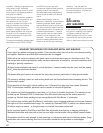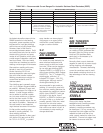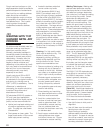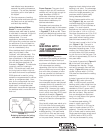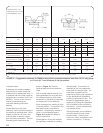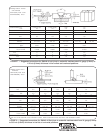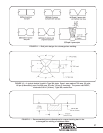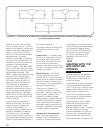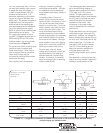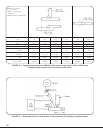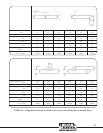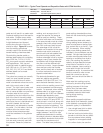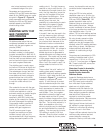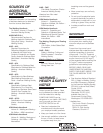
28
additions to the flux are not made,
the flux is called “neutral.” The term
neutral is only relative in that the alloy
content of the weld is still altered by
the flux. Lincoln flux ST-100 is an
alloy flux for use with solid stainless
steel electrodes. It contains
chromium which helps compensate
for chromium in the electrode that is
oxidized in the arc and therefore not
recovered in the weld deposit.
Lincoln fluxes 801, 802, 880, 880M,
882, and Blue Max 2000 are neutral
fluxes designed for welding with solid
stainless steel electrodes. With
Nb(Cb) – bearing stainless filler metal
(such as ER347), slag removal is
often best with Blue Max 2000 or
802 fluxes. Lincoln flux 860 is a
neutral flux that can be used with
308L electrode for applications
requiring a lower ferrite number. It
should be noted that this combina -
tion will produce a tighter slag with
surface slag sticking. Lincoln MIL-
800H flux can be used with ER308L
filler metal to produce a 308H (0.04-
0.08%C) deposit.
The composition ranges listed in
AWS A5.9 are broad. Since com -
position profoundly affects weld
quality and serviceability, the
complete range of variations cannot
always be tolerated in the deposit.
To maintain control, the welding
technique, alloy content of the flux or
other appropriate changes should be
made to compensate for variations in
filler metal composition.
The several methods of starting the
weld that are commonly in use
include:
Scratch Start — In a scratch start,
the wire is fed toward the work and
the carriage travel is also started.
When the wire touches the work, it
will not fuse to the workpiece
because of the relative motion of the
carriage. This type of starting is also
called a “flying start.”
Retract Starting — The wire is
“inched” toward the work and
covered with flux. When the weld is
started, the wire retracts momentarily
and then reverses to feed forward.
This method is not recommended for
light gauge stainless steel.
Once the arc is initiated, it is
important to monitor the various
parameters. Welding current is the
most influential variable. Next in
impor tance is welding voltage.
Weld ing speed changes conform to
a pattern; if the speed is increased,
there is less weld reinforcement; if
decreased, there is more weld rein -
forcement. In addition, weld speed
can affect depth of penetration.
Cladding with Submerged Arc —
SAW is normally a high dilution
process, which is undesirable for
cladding. A procedure that works
well, however, is to change from the
normal DC electrode positive polarity
to DC electrode negative polarity,
and to limit the wire feed speed to
the low end of the normal range –
e.g., 60 ipm wire feed for 1/8"
electrode, or 80 ipm for 3/32"
electrode.
10.3
WELDING WITH THE
GAS METAL ARC
PROCESS
Stainless steels may be welded by
the gas metal arc process, using
either spray arc, shortcircuiting or
pulsed arc transfer.
Copper backup strips are necessary
for welding stainless steel sections
up to 1/16 inch thick. Backup is also
needed when welding 1/4 inch and
thicker plate from one side only.
No air must be permitted to reach
the underside of the weld while the
weld puddle is solidifying.
Oxygen picked up by the molten
metal may reduce the corrosion
resistance and ductility of the
stainless steel as it cools. To prevent
this, the underside of the weld
should be shielded by an inert gas
such as argon. The shielding gas
source can be built into the fixture.
Electrode diameters as large as 3/32
FIGURE 14 — (a) Contour of a weld bead in the flat position with the work horizontal; (b) welding slightly uphill;
(c) welding slightly downhill.



